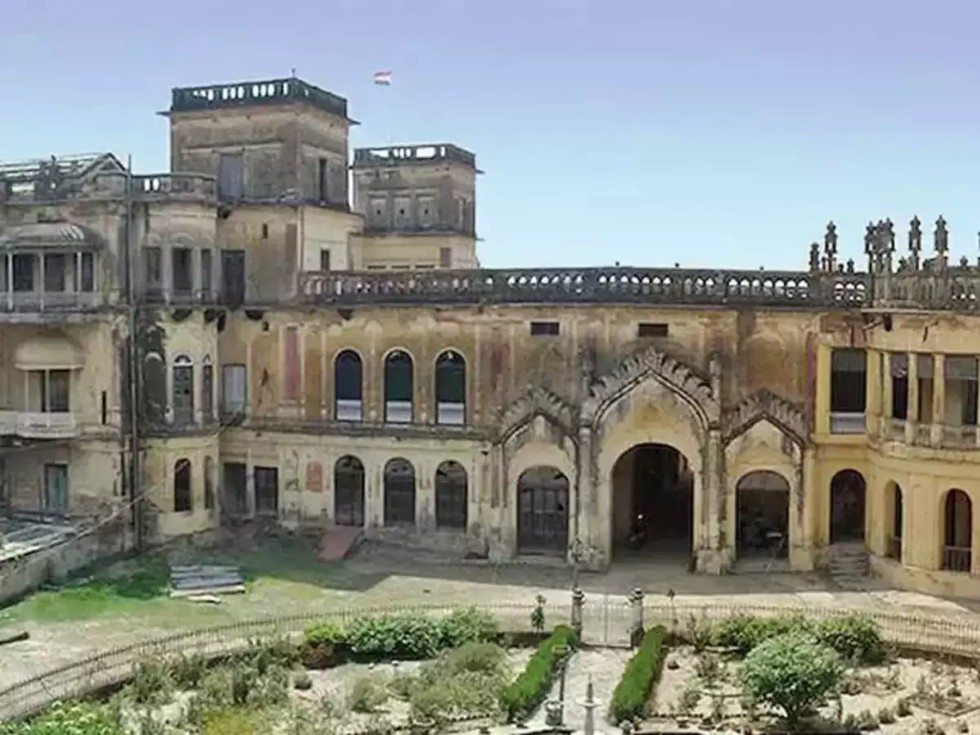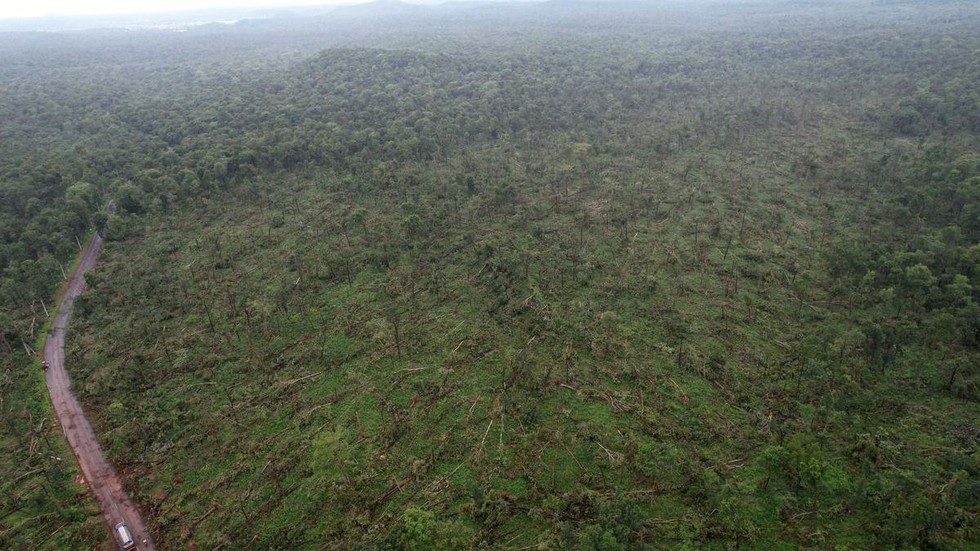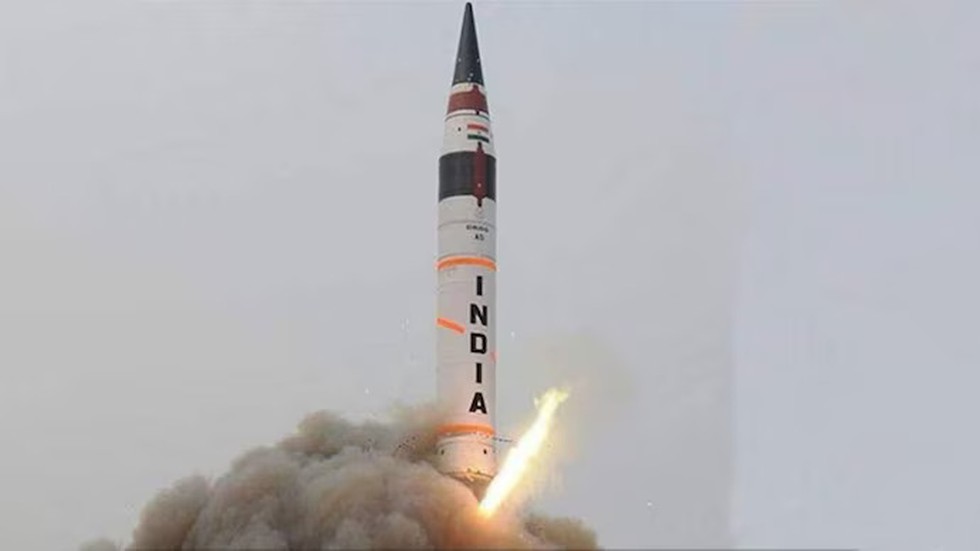
About Enemy Property:
- The Enemy Property Act 1968 defined an ‘enemy’ as a country (and its citizens) that committed external aggression against India (i.e., Pakistan and China).
- Enemy property means any property for the time being belonging to or held or managed on behalf of an enemy, an enemy subject or an enemy firm.
- These properties are of those left behind by the people who took citizenship of Pakistan and China after leaving India during the partition and after 1962 war.
- In 2017, Parliament passed the Enemy Property (Amendment and Validation) Bill, 2016, which amended the 1968 Act and the Public Premises (Eviction of Unauthorised Occupants) Act, 1971.
- It expanded the definition of the terms “enemy subject”, and “enemy firm” to include the legal heir and successor of an enemy, whether a citizen of India or a citizen of a country which is not an enemy; and the succeeding firm of an enemy firm, irrespective of the nationality of its members or partners.
- The amended law provided that enemy property shall continue to vest in the Custodian even if the enemy or enemy subject or enemy firm ceases to be an enemy due to death, extinction, winding up of business or change of nationality, or that the legal heir or successor is a citizen of India or a citizen of a country which is not an enemy.
- Maximum number of enemy properties are in Uttar Pradesh - 4,991. West Bengal has 2,735, and Delhi has 487.
2. VisioNxt Initiative
About VisioNxt Initiative:
- It is India’s first-ever trend insights and forecasting Initiative.
- It was conceived and established at NIFT Delhi (Creative Lab) and NIFT Chennai (Insights Lab) with the support of the Ministry of Textiles, Government of India, in 2018.
- The initiative, now centralized in Chennai, focuses on delivering trend insights and forecasting for the Indian fashion and retail market.
- It also offers various trend-related consultancy services, academic courses, workshops etc.
- Its mission is to identify, map and analyse geo-specific trends, reflecting the positive plurality, cultural diversity and socio-economic nuances of India while collating comprehensive trends and insights.
- It combines AI and EI to generate fashion trend insights and forecasts.
- Significance:
- India's entry into the forecasting space offers multiple advantages: it reduces dependence on global forecasting agencies, provides unique insights into Indian fashion consumers, integrates India’s strength in information technology with textiles and combines artificial and human intelligence.
- To support weavers, manufacturers, retailers, domestic businesses, homegrown designers and fashion brands, this report is available in Hindi and English through the VisioNxt portal.
- The initiative empowers users to design, produce and launch consumer-focused, targeted collections for this diverse nation ‘Paridhi’ will mark the launch of the first inclusive fashion trend forecast by VisioNxt, along with a web portal to disseminate India-specific fashion trends.
- VisioNxt has achieved this through the development of a unique prediction model known as "DeepVision," designed to decode patterns and interpret fashion trends in India.
3. Eturunagaram Wildlife Sanctuary

About Eturunagaram Wildlife Sanctuary:
- It was declared as a wildlife sanctuary in 1953.
- Location: The sanctuary is located near the border of Maharashtra, Chhattisgarh and Telangana.
- Rivers: The perennial riverDayyam Vagu flows through this sanctuary. This Vagu separates the wildlife sanctuary into two parts.
- The sanctuary is also famous for the Sammakkka Sarakka Jathra, one of Asia's largest tribal jathra, taking place here every two years.
- The River Godavari also passes through the sanctuary.
- Vegetation: The region falls in the tropical dry deciduous type of vegetation.
- Flora: The sanctuary is thus rich in the growth of teak, bamboo and other trees like madhuca and terminalia. Climbers are the unique features which are found in abundance across the length and breadth of this Sanctuary.
- Fauna:
- It is home to keystone species in the sanctuary like Indian gour and giant squirrel.
- It provides the dwelling ground for Tigers, Leopard, Jackals Sloth Bear, Panther, Wolf, Wild Dogs, Chousingha, Sambar.
4. Agni-4 Missile

About Agni-4 Missile:
- It is an intermediate-range ballistic missile.
- The launch of this Agni-4 was carried out from the Integrated Test Range in Odisha’s Chandipur.
- The launch successfully validated all operational and technical parameters. It was conducted under the aegis of the Strategic Forces Command, a part of India's Nuclear Command Authority (NCA).
- Features:
- It can hit as far as 4,000 kilometres.
- The 20-metre-long missile can carry a payload of 1,000 kg and can be fired from a road-mobile launcher.
- It is a surface-to-surface
- It is a mobile, two-stage solid-fuel system.
- The Agni missiles are designed and developed by the Defence Research and Development Organisation (DRDO).
Key Facts about Strategic Forces Command (SFC)
- It sometimes called Strategic Nuclear Command, forms part of India's Nuclear Command Authority (NCA), which is responsible for command-and-control decisions regarding India’s nuclear weapons programme.
- SFC is responsible for the management and administration of the country's tactical and strategic nuclear weapons stockpile.
- It was created on January 4, 2003.
5. Water Spinach

About Water Spinach:
- It is native to the tropics and subtropics; this semi-aquatic perennial plant is believed to have been the first domesticated in Southeast Asia.
- In Southeast Asian nations like Malaysia, China, Hong Kong, Singapore and Indonesia, the plant is mostly grown commercially, while in the United States and India, it grows in the wild as a weed.
- In India, it grows along the paddy fields, ponds and rivers and is available around the monsoon season in July and August.
- Other names: It is known as kalmi saag in West Bengal, naari ka saag in Uttar Pradesh, nalichi-bhaji in Marathi and sarkaraivalli in Tamil.
- The plant is relatively easy to grow because it requires little care and flourishes naturally in waterways.
- It grows very quickly under optimal conditions, though it has to be ensured that the water used is not saline or stagnant.
- Researchers in India, Pakistan and the US, find water spinach effective against lead poisoning.
- Health benefits:
- The plant also has medium levels of beta carotene, calcium, vitamin E and iron; and medium-to-high levels of ascorbic acid.
- The substantial quantities of phyto-antioxidants in the leaves may mediate its beneficial function against Doxorubicin.
6. National Tiger Conservation Authority (NTCA)

About National Tiger Conservation Authority (NTCA):
- It is a statutory body under the Ministry of Environment, Forest, and Climate Change (MoEFCC) constituted to strengthen tiger conservation.
- NCTA was created in 2005 following the recommendation of the Tiger Task Force and was given the status of statutory authority under Section 38L of the Wild Life (Protection) Amendment Act, 2006.
- Objectives:
- Providing statutory authority to Project Tigerso that compliance of its directives becomes legal.
- Fostering accountability of the Center-State in the management of Tiger Reserves by providing a basis for MoUs with States within the federal structure.
- Providing for an oversight by Parliament.
- Addressing livelihood interests of local people in areas surrounding Tiger Reserves.
NTCA Composition:
- Minister in charge of MoEFCC (as Chairperson),
- Minister of State in MoEFCC (as Vice-Chairperson),
- three members of Parliament, the Secretary (MoEFCC), and other members.
- Powers and Functions:
- Approving the tiger conservation plan prepared by the State Government.
- Maintaining sustainable ecology and disallowing any such use of land within the tiger reserves which is detrimental to the ecology.
- Making rules and guidelines for tourism activity for Project Tiger in the tiger reserves and also ensuring their due compliance.
- Measures for addressing conflicts between men and animals and emphasize on co-existence between the two outside the national parks, tiger reserves, or sanctuaries.
- Providing information to the public on the conservation plans, estimation of population of tigers, the status of natural habitat and reporting on any untoward incident. TCA releases the status of tigers in India.
- Approving coordinates research and monitoring of tigers.
- Facilitating and supporting tiger reserve management in the State.
- Ensuring critical support in scientific, IT and legal support for better conservation of tigers.
- Facilitating capacity-building programmes for the officers and staff.
What is Project Tiger?
- It is a tiger conservation programme launched in 1973 as a centrally sponsored scheme by the Government of India.
- It was the first of its kind Project in India to maintain the population of Tigers in India and to protect them from poaching and other threats.
- It is administered by the National Tiger Conservation Authority (NTCA).
- It aims at:
- Ensuring a viable population of the Bengal tiger (‘endangered’) in its natural habitats,
- Protecting it from extinction,
- Preserving areas of biological importance as a natural heritage that represent the diversity of ecosystems across the tiger's range in the country
- For tiger conservation, Tiger Reserves were set up in 1973 and are governed by Project Tiger.
Initially, the Project covered nine tiger reserves spread over 18,278 sq. km.
- Now, the project includes 54 tiger reserves sprawling over around 75,000 km.
7. BPaLM Regimen

About BPaLM Regimen:
- It is a new treatment regimen against Multi-Drug-Resistant Tuberculosis (MDR-TB).
- It was introduced by the Union Ministry of Health and Family Welfare under its National TB Elimination Program (NTEP).
- Composition: The regimen combines four drugs—Bedaquiline, Pretomanid, Linezolid, and optionally Moxifloxacin.
- This regimen includes a new anti-TB drug called Pretomanid, which was earlier approved and licensed for use in India by the Central Drugs Standard Control Organization (CDSCO).
- Efficacy:
- The BPaLM regimen is a safer and more effective treatment option compared to traditional MDR-TB treatments.
- It is an all-oral regimen with a low overall pill burden, which makes it patient-friendly.
- It can cure drug-resistant TB in just six months, compared to the previous treatment duration of up to 20 months and is associated with fewer side effects.
National TB Elimination Program (NTEP):
- It is a public health initiative of the Government of India that organizes the country’s tuberculosis elimination efforts.
- It has set an ambitious goal of eradicating TB by 2025.
- NTEP is a centrally sponsored scheme implemented under the aegis of the National Health Mission with resource sharing between the State Governments and the Central Government.
- It is based on the daily DOTS (Directly Observed Treatment with Short-course Chemotherapy) strategy.
- The DOTS strategy ensures that infectious TB patients are diagnosed and treated effectively till cure, by ensuring availability of the full course of drugs and a system for monitoring patient compliance to the treatment.
- The program provides various free-of-cost, quality tuberculosis diagnosis and treatment services across the country.
- NI-KSHAY Portal: NI-KSHAY (Ni=End, Kshay=TB) is the web-enabled patient management system for TB control under the National Tuberculosis Elimination Programme (NTEP).
8. Technical Textiles

About Technical Textiles:
- Technical textiles are defined as textile materials and products used primarily for their technical performance and functional properties rather than their aesthetic or decorative characteristics.
- Other terms used for defining technical textiles include industrial textiles, functional textiles, performance textiles, engineering textiles, invisible textiles, and hi-tech textiles.
- They are designed to have high levels of physical, mechanical, thermal, and/or chemical properties for use in specific applications within industrial sectors such as earthworks, construction, civil engineering, transport, defence, medical, and healthcare.
- They are used individually or as a component/part of another product.
- Technical textiles are used individually to satisfy specific functions, such as fire-retardant fabric for uniforms of firemen and coated fabric to be used as awnings.
- As a component or part of another product, they are used to enhance the strength, performance or other functional properties of that product.
- They are manufactured using natural as well as man-made fibres.
- They are classified into 12 major groups based on their application areas, namely: Agrotech, Geotech, Buildtech, Mobiltech, Hometech, Clothtech, Indutech, Meditech, Sportstech, Protech, Packtech and Oekotech.
National Technical Textiles Mission:
- It was launched by the Union Ministry of Textiles to increase the penetration level of technical textiles in India while leveraging the extraordinary growth rate of the sector.
- The mission aims to position India as a global leader in technical textiles.
- The mission will comprise of the following four components:
- Research, Innovation and Development
- Promotion and Market Development
- Export Promotion
- Education, Training, and Skill Development
- Target: The Mission has a target to take the domestic market size of the technical textile sector to $ 40-50 Billion by the year 2024 with an average growth rate of 15-20% per annum.
9. National Company Law Appellate Tribunal (NCLAT)

About National Company Law Appellate Tribunal (NCLAT):
- It is a quasi-judicial body constituted under Section 410 of the Companies Act, 2013for hearing appeals against the orders of the National Company Law Tribunal(s) (NCLT), with effect from 1st June 2016.
- It aims to expedite the resolution of corporate disputes and promote transparency and efficiency in the corporate governance and insolvency processes in India.
- Functions:
- Hear appeals against the orders passed by the NCLT(s) under Section 61 of the Insolvency and Bankruptcy Code, 2016 (IBC).
- Hear appeals against the orders passed by the Insolvency and Bankruptcy Board of India (IBBI) under Sections 202 and 211 of the IBC.
- To hear and dispose of appeals against any direction issued, or decision made, or order passed by the Competition Commission of India (CCI).
- It is also the Appellate Tribunal to hear and dispose of appeals against the orders of the National Financial Reporting Authority.
- It also enjoys advisory jurisdiction when a legal issue has been referred to it by the President of India for opinions and advice.
- Headquarters: New Delhi.
- Composition:
- It is composed of a chairperson and judicial and technical members.
- These members are appointed by the Central Government based on their expertise and experience in relevant fields such as law, finance, accountancy, management, and administration.
- Disposing of cases:
- On the receipt of an appeal from an aggrieved person, the NCLAT would pass such orders, after allowing being heard, as it considers fit, confirming, changing, or setting aside the order that is appealed against.
- The Appellate Tribunal is required to dispose of the appeal within a period of six months from the date of the receipt of the appeal.
- Its decisions can be appealed to the Supreme Court.
- Powers:
- It has the authority to regulate its own procedures and has powers similar to those vested in a civil court under the Code of Civil Procedure, 1908.
- These powers include summoning and examining witnesses, requiring the production of documents, receiving evidence on affidavits, issuing commissions, and more.
- Any order made by the NCLAT can be enforced in the same manner as a decree made by a court in a suit.
- There shall be no jurisdiction of a civil court to hear any suit or proceeding to any matter which the NCLAT has been authorised to determine by or under the Companies Act, 2013, or any other law for the time being in force.
- No injunction shall be granted by any Court or other authority in respect of any action that is taken or that ought to be taken by the NCLAT in pursuance of any power conferred on it by or under this Act or any other law for the time being in force.
10. Financialisation

About Financialisation:
- It refers to the increase in size and importance of a country’s financial sector relative to its overall economy.
- It is a process whereby financial markets, financial institutions and financial elites gain greater influence over economic policy and economic outcomes.
- It represents the shift from traditional industrial or productive activities (like manufacturing) to financial activities that involve the trading, management and speculation of financial assets.
- The term also describes the increasing diversity of transactions and market players as well as their intersection with all parts of the economy and society.
- It has occurred as countries shifted away from industrial capitalism.
- It impacts both the macroeconomy and the microeconomy by changing how financial markets are structured and operated, and by influencing corporate behavior and economic policy.
- Financialisation has also caused incomes to increase more in the financial sector than in other sectors of the economy.


























































































































































.png)
.png)
.png)
.png)
.png)


.png)
.png)
.png)





.png)
.png)






.png)
.png)
.png)
.png)
.png)
.png)
.png)
.png)
.png)

.png)







.png)
.png)


.png)
.png)
.png)


.png)

.png)
.png)





.jpg)

.png)
.png)


.png)

.png)
.png)
.png)

.jpg)

.jpg)


.png)

.png)
.png)
.png)
.png)
.png)
.png)
.png)
.png)
.png)
.png)




.png)

.png)





.png)
.png)
.png)
.png)
.png)
.png)
.png)
.png)
.png)
.png)
.jpg)
.jpg)

.png)
.png)
.png)
.png)
.png)
.png)
.png)
.png)
.png)
.png)
.png)
.png)
.png)
.png)
.png)
.png)
.png)
.png)
.png)
.png)
.png)
.png)



.png)
.png)

.jpg)
.jpg)


.jpg)
.jpg)
.jpg)
.jpg)
.jpg)

.jpg)








.jpg)
.jpg)
.jpg)
.jpg)
.jpg)

















.jpg)
.jpg)







.jpg)


















.jpg)
.jpg)






























































































.jpg)
.jpg)


























.jpg)

.jpg)










.jpg)








.jpg)




.jpg)










.jpg)


















.jpg)












































.jpg)














.jpg)
.jpg)
.jpg)





.jpg)

.jpg)
.jpg)





































































.jpg)


































.jpg)
.jpg)
















































.jpg)












.jpg)


.jpg)




.jpg)
.jpg)
.jpg)

.jpg)
.jpg)
.jpg)
.jpg)

.jpg)
.jpg)
.jpg)

.jpg)
.jpg)
.jpg)
.jpg)
.jpg)
.jpg)
.jpg)
.jpg)

.jpg)


.jpg)
.jpg)
.jpg)
.jpg)
.jpg)
.jpg)
.jpg)
.jpg)
.jpg)
.jpg)











.jpg)
.jpg)





.jpg)
.jpg)
.jpg)
























.jpg)
























.jpg)









.jpg)
.jpg)







.jpg)
.jpg)









































.jpg)
.jpg)
.jpg)
.jpg)
.jpg)

.jpg)
.jpg)
.jpg)
.jpg)
.jpg)


.jpg)
.jpg)
.jpg)
.jpg)
.jpg)

.jpg)
.jpg)
.jpg)
.jpg)
.jpg)
.jpg)
.jpg)
.jpg)
.jpg)
.jpg)
.png)

.png)
.png)

.png)
.png)
.png)
.png)


.jpg)
.jpg)

.jpg)
.jpg)
.jpg)

.png)
.png)
.png)
.png)
.png)
.png)
.png)

.png)
.png)
.png)
.png)
.png)
.png)
.png)
.png)
.png)
.png)





































































-min.png)



.png)




.png)








































